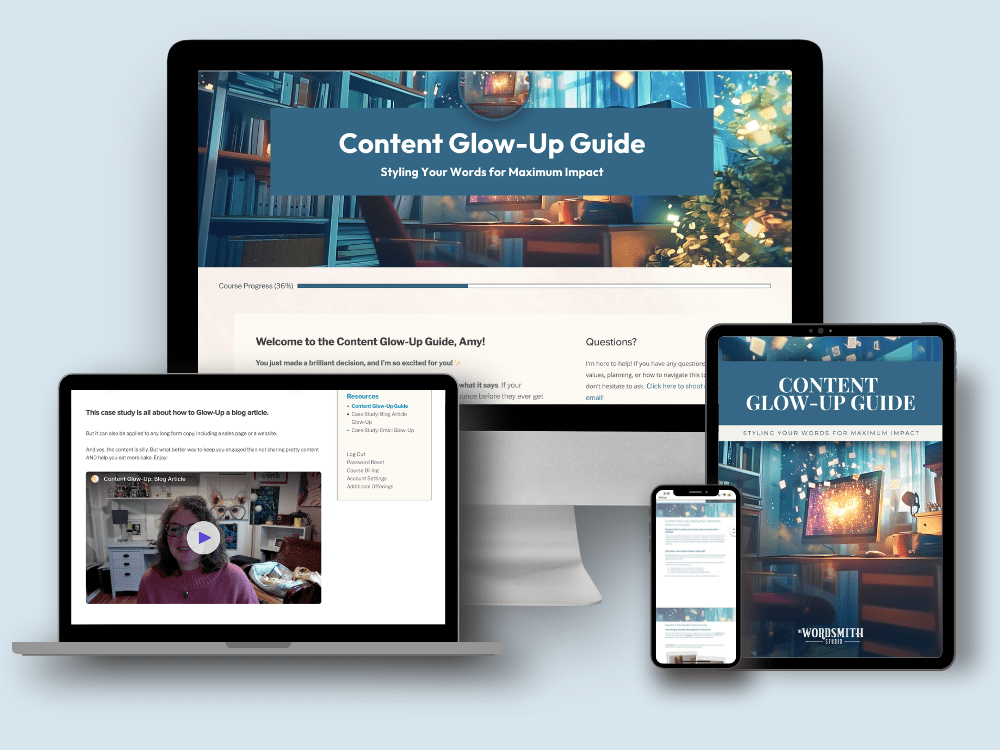Writing often feels like staring at a blank screen, hoping for a miracle.. You’re not alone if you’re struggling to find the right words. As someone who isn’t a natural writer, it might seem daunting. But here’s some good news – it’s entirely doable. When I first started, my mind buzzed with ideas, but actually putting them into words? That felt impossible. However, by following some practical tips, I managed to get through those initial hurdles. In this article, we’ll talk about some great writing tips for non-writers.
1. Understand Your Audience
If you want your writing to resonate with readers, you need to understand who they are. What are their needs, wants, and interests? What questions are they asking that you can answer? What problems do they face that you can help solve?
To truly understand your audience, start by creating a buyer persona — a fictional yet research-based representation of your ideal reader. This is a fictional representation of your ideal reader, based on real data about your existing customers or target market. It includes demographics like age, gender, location, and income level, as well as psychographics like values, interests, and challenges.
Once you have a clear picture of who you’re writing for, you can tailor your content to their specific needs and preferences. You’ll know what topics to cover, what tone and style to use, and what calls-to-action will be most effective.
👉 Learn more about customer profiles here.
To create content that truly speaks to your audience, you need to dig into their world. What keeps them up at night? What solutions are they actively searching for? Market research helps you find those answers.
Conduct market research
To create an accurate buyer persona, you need to do some market research. This can include:
- Surveying your existing customers or email subscribers
- Analyzing your website and social media analytics to see who’s engaging with your content
- Conducting interviews or focus groups with members of your target audience
- Researching industry reports and studies about your target market
The more data you can gather, the more detailed and accurate your buyer persona will be. Don’t be afraid to get specific – the more niche your audience, the easier it will be to create content that resonates with them.
👉 Learn waaaay more about researching your ideal customer here.
Put yourself in their shoes
Step into your reader’s world. What excites them? What challenges do they wrestle with daily? The best content feels tailor-made — offering real solutions to real problems. Imagine crafting content that not only engages but also solves problems, whether it’s navigating life’s quirks or mastering new skills.
Envision articles that serve as both a toolbox for practical needs—like enhancing performance in workspaces or optimizing personal tech—and a source of inspiration, perhaps through stories of resilience or innovation in fields like sports or culture. Think about creating pieces that resonate on a personal level, offering insights into managing finances, embracing technology advancements, or finding balance amidst life’s chaos—all aimed at enriching the reader’s journey with valuable knowledge and actionable tips.
Take busy moms who want to eat healthier. They need fast, practical solutions—quick recipes, meal prep hacks, and tips for picky eaters. Long, wordy articles? They don’t have time for that. Instead, short, scannable content packed with visuals works best.
By thinking like your audience, you can create content that truly meets their needs and keeps them coming back for more. So take the time to understand who you’re writing for – it’ll pay off in the long run.

2. Get Organized
One of the biggest struggles of writing? Actually knowing where to start. When you have a million ideas bouncing around in your head like over-caffeinated squirrels, it’s easy to feel overwhelmed. That’s where outlining comes in—it’s like giving those ideas a cozy little home instead of letting them run wild.
A good outline helps you:
- Clear up the mental clutter
- Pin down your main points (instead of rambling into the void)
- Organize everything so it flows logically
- Stay on track and avoid weird tangents
- Write faster and with less frustration (yay!)
Start with a brain dump
Before you attempt to wrangle your ideas into an outline, do a brain dump. Just throw everything onto the page—no filter, no second-guessing. Think of it as unloading a messy purse. You can sort the gum wrappers from the actual important stuff later.
I personally love a good mind map for this. Start with your main topic in the center, then let your ideas branch out naturally. It helps you see how everything connects (and sometimes, those connections surprise you!).
Identify your main points
Now, step back and look for patterns. What are the key ideas that deserve the spotlight? What supporting details or juicy examples do you have for each one?
Try to keep it to 3-5 main points — any more, and your content might start to feel like an overstuffed suitcase. If you have tons of ideas, consider breaking them up into multiple pieces of content instead of cramming everything into one.
Organize your outline
Time to structure this thing! List out your main points first, then tuck the supporting details neatly underneath each one. Bullet points, numbered lists, napkin scribbles—whatever works for you.
Now, think about the flow. Should you start with the most important point and work your way down? Or kick things off with a relatable problem before swooping in with solutions? Either way, make sure your content unfolds in a way that feels smooth and logical.
And don’t forget transitions! Readers should feel like they’re being guided gently through your content—not thrown from one idea to the next like a game of hopscotch.
3. Use Simple Language
Ever read something that made your brain hurt because it was packed with fancy jargon and unnecessarily complicated words? Yeah, let’s not do that.
Good writing isn’t about sounding like a walking thesaurus. It’s about communicating your ideas clearly—like you’re chatting with a friend over coffee (or wine, no judgment).
Avoid jargon and technical terms
Every industry has its own set of insider lingo, but unless you’re writing for industry insiders, ditch the jargon. Nobody wants to Google every other word just to understand what you’re saying.
For example, instead of this SEO-heavy mess:
- “To enhance organic search visibility, prioritize authoritative backlinks and optimize keyword density to align with search engine algorithms.”
Try this:
- “Want to show up higher in search results? Create awesome content that people actually want to link to, and use words your audience is searching for—just don’t go overboard.”
Same idea. Way easier to digest.
Use short, simple words
Big words don’t make you sound smarter — just harder to understand. Swap out long, stuffy words for short, friendly ones:
- “Use” instead of “utilize”
- “Help” instead of “assist”
- “Get” instead of “obtain”
- “Show” instead of “demonstrate”
Shorter words = happier readers.
Write short sentences and paragraphs
Nobody loves reading a wall of text. Long, winding sentences? They make people tune out faster than a boring Zoom meeting.
- Keep your sentences under 25 words.
- Stick to 3-4 sentences per paragraph.
- Embrace white space—it gives your reader’s brain a break.
At the end of the day, writing isn’t about impressing people. It’s about connecting with them. Keep it simple, make it clear, and your readers will thank you.
4. Write Like You Talk
Ever notice how easy it is to explain something out loud but the second you try to write it down, it suddenly sounds stiff, robotic, or like you swallowed a textbook? Yeah, let’s not do that.
Your writing should feel like you. If you wouldn’t say it that way in real life, don’t force it onto the page.
Ditch the formalities
Unless you’re drafting a legal contract (which, let’s be real, you probably aren’t), loosen up a little. You don’t have to sound “professional” in a buttoned-up, corporate kind of way. You can be professional and friendly.
For example:
🚫 “I am reaching out to inquire about the status of our pending collaboration.”
✅ “Hey! Just checking in—any updates on our project?”
See? Same message, but way more natural.
Use contractions
No one talks like a robot, so don’t write like one.
🚫 “I do not believe that it is necessary.”
✅ “I don’t think that’s necessary.”
Unless you’re writing dialogue for a very formal character (“I cannot comply with this request, sir.”), contractions make your writing sound way more human.
Read it out loud
The best way to test if your writing sounds natural? Read it out loud. If you stumble over it or feel like you’d never actually say that in a conversation, rewrite it. Your goal is to sound like you—not a corporate memo.
5. Make It Scannable
People don’t read every word—they scan. They scroll, skim, and stop at the good parts. If your writing looks like an endless block of text, they’ll bounce faster than a bad first date.
Here’s how to make your content scannable (and keep people reading):
Use subheadings
Big walls of text? No, thanks. Break things up with subheadings so readers can easily find what they need. (Bonus: it helps you stay organized, too!)
For example, instead of this:
- 🚫 “One important thing to remember is to write in short sentences and paragraphs so people can scan your content easily. Another tip is to use bullet points, since they help break things up. Also, subheadings are your friend.”
Do this:
- ✅ Make it easy to read
- Use short sentences and paragraphs.
- Break things up with bullet points.
- Add subheadings so readers can find what they need.
Ahh, much better.
Embrace bullet points and lists
Speaking of bullet points… use them! They make your content easier to digest.
People love lists because they:
- ✔ Help break up long text
- ✔ Are easy to skim
- ✔ Make information feel bite-sized and manageable
Bold key phrases
Help your readers out—highlight important ideas with bold text so they pop.
Instead of:
- 🚫 “When writing, it’s important to use short paragraphs so your content is easy to read and doesn’t overwhelm your audience.”
Try:
- ✅ When writing, use short paragraphs so your content is easy to read and doesn’t overwhelm your audience. Your reader’s eyes will naturally be drawn to the bolded part, making it easier for them to absorb key points.
6. Tools to Help
Even the best writers need a little backup. Luckily, there are some amazing tools that can help you write better, faster, and with fewer “ugh, why is this so hard?” moments. Here are a few of my favorites:
💡 ProWritingAid – My absolute go-to for editing. This tool checks grammar, spelling, readability, transitions, and all the little things that make writing shine. Basically, it’s like having a super-smart editor in your pocket.
💡 Canva – Okay, this isn’t technically a writing tool, but hear me out. Good content is about more than just words! Canva makes it easy to create eye-catching visuals for blog posts, social media, or anything else that needs a little extra flair.
💡 If you want some more practical help along with a few video walk-throughs, check out my Content Glow-Up Guide! It makes creating scannable content easy-peasy.

Writing might not come naturally at first, but with a little practice and the right tools, you’ll be whipping up engaging, effective content in no time. So grab a tool (or two) and start creating!
Frequently Asked Questions
How to write when you’re not a writer?
Start by organizing your thoughts and ideas. Create an outline to guide you. Use simple language.
How can I write without writing?
Try dictation software or voice-to-text tools. They let you speak while the tool transcribes your words.
Flexibility to Adjust Your Date
Have a scheduling conflict? Get in touch, and we’ll make every effort to accommodate your needs!
Simple and Transparent Billing Process
Secure your appointment by providing a 50% initial payment upfront. Final payment of the remaining 50% is required 24 hours prior to your event.
Request an Invoice for Your Purchase
Absolutely! You have the option to do so within the WordPress blocks, patterns, and content editor. Requires customer support engagement and provision of valid purchase number.
Final Thoughts: You’ve Got This!
Here’s the thing: anyone can be a good writer. You don’t need a degree in English lit or a stash of fancy words—just a clear message, a little personality, and the willingness to practice.
💬 Get organized.
✍️ Write like you talk.
📑 Make it scannable.
🛠 Use tools to help.
Follow these simple steps, and before you know it, you’ll be writing with confidence—and maybe even enjoying it. (Gasp!)
So, what are you waiting for? Go write something. The world is ready to hear what you have to say.



